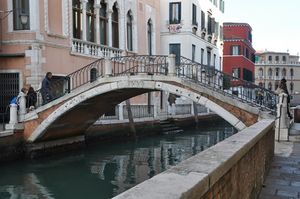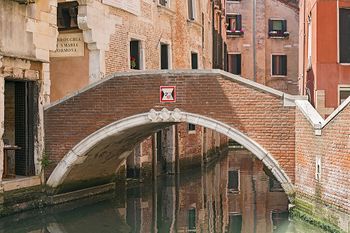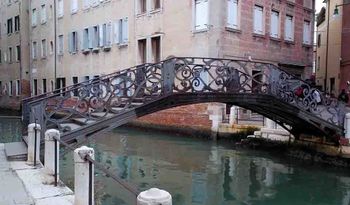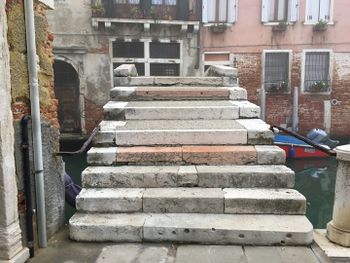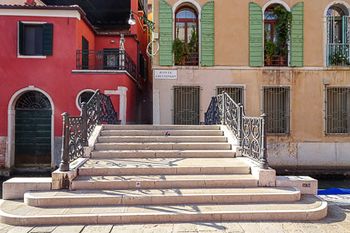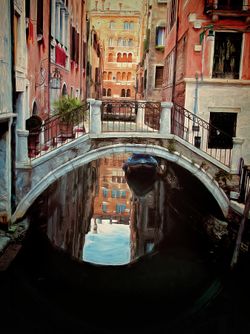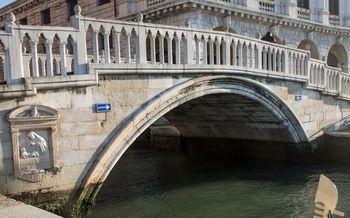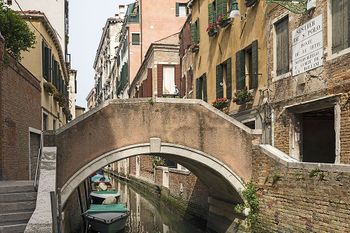3DVeniceBridges
Introduction
Venice is built on a group of 118 small islands that are separated by canals and linked by over 400 bridges. Venice is built on a group of 118 small islands that are separated by canals and linked by over 400 bridges. The Bridge plays such an important part in Venice that studying the bridge can help us understand better the history and structure of Venice. Our project is mainly based on the book Catalogo Veneziano – Ponti Santa Croce and Catalogo Veneziano – Ponti San Polo, to build specific 3D models for these bridges and to create specific additional layers on the geographical information system.
Motivation
With more than 400 bridges, Venice is known as the “city of bridges”. In fact, the evidence of the first stone bridges dates back to 1170, and before that time people only used boats to go from one of the 121 islands to another island. Because of technological progress, population growth, and the city’s increase in trade it became necessary to build routes that would connect the various areas. That is how the bridges of Venice were born.
Bridges are an integral part of Venice. The bridge connected Venice from a number of scattered islands into a whole, facilitating economic and cultural exchanges and development within the city, while the economic and cultural development also contributed to the construction of the bridges. The construction of bridges’ 3D models allows us to understand more about the structure and history of the city. What’s more, digitalizing this information allows the researchers to carry out further analyses.
Our project is based on the materials (Catalog Venezia), combined with today's bridge photo, to upgrade the Napoleonic cadaster with bridge information. Given the huge number of bridges in Venice, it would take a long time to build each bridge manually. We have found that the majority of the bridges mentioned in the materials are composed of 4 parts: arc, plane, stairs, and railings. And different parts have different types. So we want to create a bridge generator in which we can specify the type and data of each component based on the materials to build the 3D model for bridges of Venice.
Methodology
1. Build Database
1.1 Classify the Bridge
Before building the 3D model, we need to figure out the typologies of bridges. To facilitate 3D modeling, we treat the bridge as four parts: arc, bridge body, stairs, and railings. Different parts have different types, which form a wide variety of bridges.
1.1.1 Arc
There are two main types of bridges in Venice, arch bridges and grider bridges:
- Non-arched bridges are referred to as girder bridges, also called truss bridges. Truss bridges generally have a horizontal deck between two imposts and therefore require longer access ramps than arch bridges, whose ramps are inclined from the keystone to the abutments; in addition, generally speaking, girder bridges need to have higher structural depth than arch bridges. Against these disadvantages, truss bridges have the undoubted advantage of generating mainly vertical reactions on the foundations, making them highly suitable for the city’s soil characteristics.
- Arch bridges are much more prevalent, as they successfully integrate the need for a continuous pedestrian walkway with the need to leave sufficient space underneath for boats to pass. Arches are designed according to various formal types: semi-circular, horseshoe, segmental, equilateral pointed, elliptical.
- (a) Round, when the curve of the arch is equal to a semi-circumference (fig. 1): tutto sesto.
- (b) Curved, when the curve of the arch is greater than a semi-circumference (fig. 2):sesto rialato.
- (c) Normal, when it is a low-slung arch, cod with the curve smaller than a semi-circumference (fig. 3): normale.
- (d) Only if the curve is smaller than a semi-circumference is the arch called a low arch (fig. 4)sesto ribassato.
- (e) Equilateral pointed(fig 5):acuto o gotico.
- (f) Polycentric, when the curve results from the union of several (3 or 5) arcs of circles of different radii (fig. 6): policentrico.
We found that most of the bridges from the materials are type c and type d, and very few bridges of type e and f. Thus, we can draw the arc using “3 points” ways to build the 3D model for most bridges.
1.1.2 Bridge Body
According to the books “I ponti di Venezia” there are three types of bridges material:
- Wooden bridges (Struttura in legno ).
- Stone bridges (struttura in pietra d'Istria / struttura in pietra).
- Iron bridges (struttura in ferro).
1.1.3 Stairs
Staircases are generally the straight flight of stairs, with some differences in shape the shape of the step. There are two different types of step’s shape:
- Normal Rectangle.
- Normal Rectangle with an arc in the corner.
1.1.4 Railing
According to the books “I ponti di Venezia” there are two types of railing material:
- Iron railings (spallette in ferro).
- All metal handrails are composed of balusters, which differ in their shape.
- Stone railings (spallette in pietra).
- There are two types of railings made of stone; one is composed of balustrade, the other is solid railings.
1.2 Digitalize and OCR the Materials
First, we digitalize the materials (Catalog Venezia) with printers to get ‘.pdf’ file. Then, we use OCR to recognize the descriptive text information from the scanned pdf file. As for recognizing results, we first delete the messy code and then manually check and correct the results to get our final information.
2. Build 3D Model
Project Plan
| Date | Task | Completion |
|---|---|---|
| By Week 3 |
|
✓ |
| By Week 4 - 5 |
|
✓ |
| By Week 6 |
|
✓ |
| By Week 7 |
|
✓ |
| By Week 8 |
|
✓ |
| By Week 9 |
|
✓ |
| By Week 10 |
|
|
| By Week 11 |
|
|
| By Week 12 |
|
|
| By Week 13 |
|
|
| By Week 14 |
|
